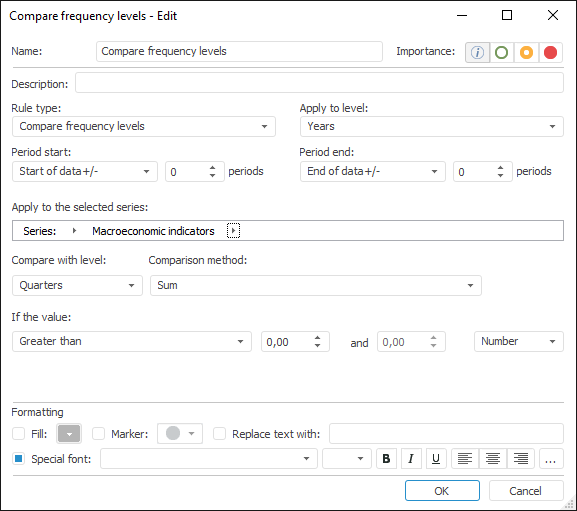
The rule compares values by calendar frequency levels, if data source is standard cube with calendar dimension or time series database with several calendar frequency levels.
NOTE. Comparison of two and more time series by various calendar frequency levels is available, if values of all time series mandatory attributes matches and calendar frequency differs.

To set up the rule:
Set general parameters of the rule.
Set initial calendar level and level used for comparison. Use the Apply to Level and Compare with Level drop-down lists.
NOTE. Calendar frequency of the compared level should be greater that frequency of the level used for comparison.
 Features of working with drop-down lists
Features of working with drop-down lists
Set aggregation data method in the Comparison Method drop-down list.
Data aggregation is performed from the level set in the Compare with Level list to the level set in the Apply to Level list.
Available aggregation methods:
Sum.
Mean.
Minimum value.
Maximum value.
First value.
Last value.
Difference between maximum and minimum values.
Standard deviation.
Set frequency of time series observation change between different levels. Use the If the Value parameter group:
Determine parameters of comparison. Use operator and operands for comparison. The number of available operands depends on the selected operator. Available operators:
Greater.
Less.
All values in the range.
All values out of the range.
Greater or equal.
Less or equal.
Equal.
Not equal.
Set scale for operands in comparison condition:
Number. Absolute scale.
Percent. Percent scale.
See also: